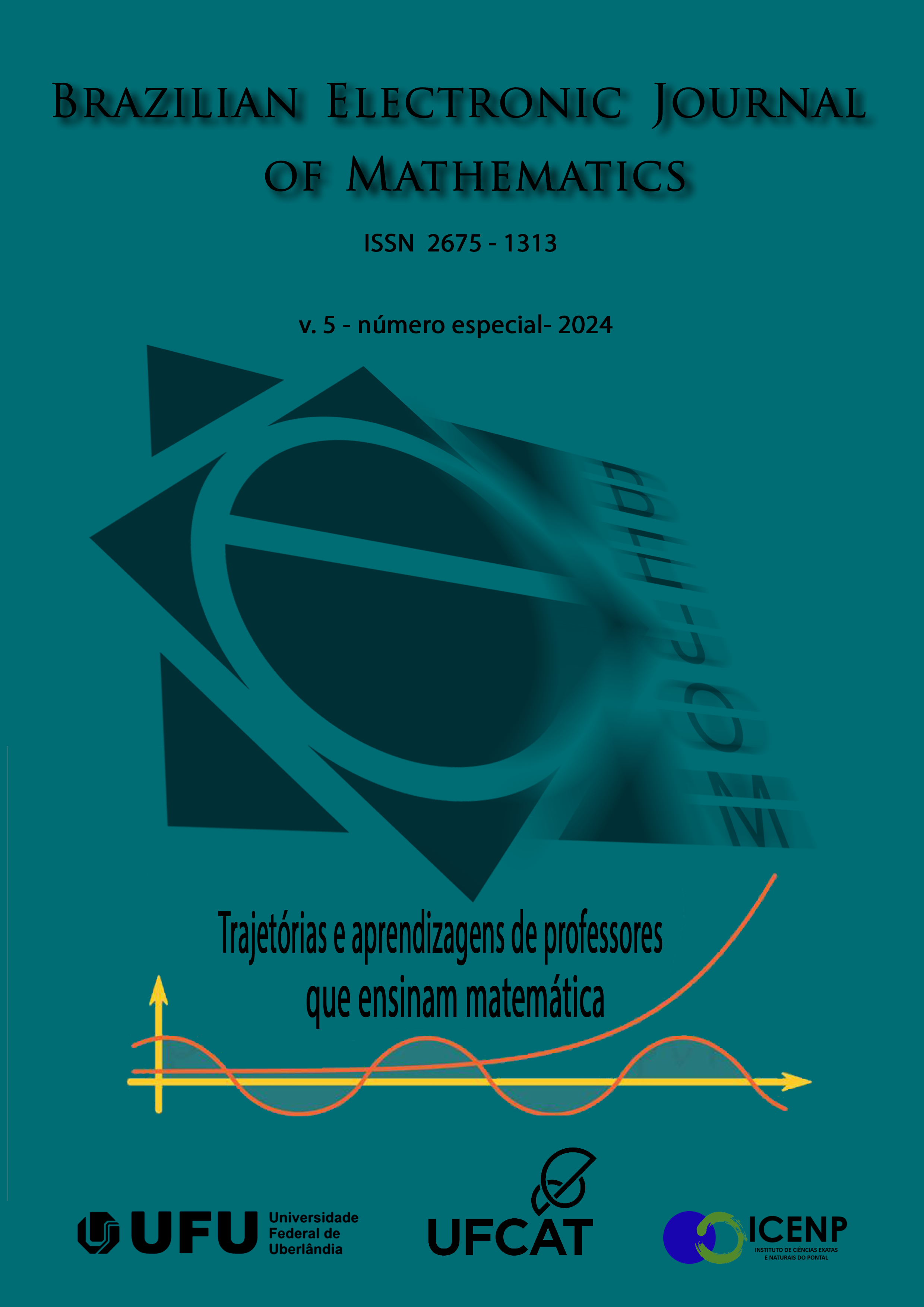Teaching proposal in triangles and quadrilaterals in the 6th year of elementar education using the GeoGebra platform
DOI:
https://doi.org/10.14393/BEJOM-v5-2024-71674Keywords:
Digital technology, mathematical education, plane geometryAbstract
We understand that the use of digital technologies in mathematics classes, a theme of various research in Education and Mathematics Education, seeks, primarily, to integrate the contemporary student into the use of the potential of software and computers in the teaching and learning process. In this report, the elaboration of a didactic proposal and its results in student learning and in the training of authors are discussed. The objective of this work is to report the elaboration, development, results and discussion of a didactic proposal for the 6th year of Elementary School on the topic “triangles and quadrilaterals”, with the help of the GeoGebra software. GeoGebra software is a free source application that promotes the sharing and publication of materials and constructions that can be used by teachers in their classrooms. The results demonstrate that the mediation of teachers during the proposal was very important in the teaching and learning process in the computational environment.
Downloads
References
BORBA, Marcelo de Carvalho; PENTEADO, Miriam Godoy. Informática e Educação Matemática. 1ª Ed. Belo Horizonte: Autêntica, 2001.
GONÇALVES, William Vieira. O transitar entre a Matemática do Matemático, a Matemática da Escola e a Matemática do GeoGebra: Um estudo de como Professores de Matemática lidam com as possibilidades e limitações do GeoGebra. 2016. 240 f. Tese (Doutorado em Educação para a Ciência) – Universidade Estadual Paulista “Júlio de Mesquita Filho” - Faculdade de Ciências, Bauru/SP.
HOHENWARTER, Markus; PREINER, Judith. Dynamic Mathematics with GeoGebra. The Journal of Online Mathematics and Its Applications. 2007.
MARCO, Fabiana Fiorezi de. Atividades computacionais de ensino na formação inicial do professor de Matemática. 2009. 211 f. Tese (Doutorado em Educação) – Faculdade de Educação. Universidade Estadual de Campinas, Campinas.
MARCO, Fabiana Fiorezi de; LOPES, Anemari Roesler Luersen Vieira. Pesquisa em Educação Matemática e Psicologia Histórico-Cultural: alguns apontamentos. Educação Matemática Pesquisa, São Paulo, v.17, n.3, p. 456- 471, 2015.
NOGUEIRA, Cleia Alves. Ensino de geometria: concepções de professores e potencialidades de ambientes informatizados. 2015. 155 f. Dissertação (Mestrado em Educação) – Faculdade de Educação. Universidade de Brasília, Brasília.
PROCHNOW, Dulcineia Salla; ALVES, Rozane da Silveira. O GeoGebra como recurso criativo para professores ensinar Geometria. In: III CONGRESSO BRASILEIRO GEOGEBRA / X DIA GEOGEBRA IBEROAMERICANO. 2022, Caruaru.
SANTOS, Letícia Rodrigues; ANDRADE, Elisângela Ladeira de Moura; FERNANDES. Juliana Cristina da Costa Fernandes; LIMA, Emmanuela Ferreira de. As contribuições da Teoria da Aprendizagem de Lev Vygotsky para o desenvolvimento da competência em informação. Revista Brasileira de Biblioteconomia e Documentação, São Paulo, v. 17. 1-15 p, 2021.
SOUZA, Flávia Dias de; MORETTI, Vanessa Dias. Teoria Histórico-Cultural e Educação Matemática: diálogos possíveis na formação de professores. Revista Venezolana de Investigación en Educación Matemática, v. 1, n. 2, 1-27 p, 2021.
ZAQUEU, Ana Cláudia Molina. O programa institucional de bolsas de iniciação à docência (PIBID) na formação de professores de matemática: perspectivas de ex-bolsistas. 2014. 267 f. Dissertação (Mestrado em Educação Matemática). Instituto de Geociências e Ciências Exatas. Universidade Estadual Paulista. Rio Claro.
Downloads
Published
Issue
Section
License
Copyright (c) 2024 Arianne Vellasco-Gomes, Matheus Carvalho Carrijo Silveira, Fabiana Fiorezi de Marco

This work is licensed under a Creative Commons Attribution-NonCommercial 4.0 International License.
- Articles published from 2025 onwards are licensed under the CC BY 4.0 license. By submitting material for publication, authors automatically agree to the journal’s editorial guidelines and affirm that the text has been properly reviewed. Simultaneous submission of articles to other journals is prohibited, as is the translation of articles published in this journal into another language without proper authorization.
- Articles published prior to 2025 are licensed under the CC BY-NC 4.0 license.









